
The crisis of school dropout is not confined to Thailand; it threatens children globally. At a recent international webinar, “Stop! School Dropout: A Collective Intervention Model to Prevent Early School Leaving,” over 300 participants from public, private, civic society, and educational sectors convened to explore how to keep children in the classroom. They concluded that solutions must reach beyond school gates, into families and communities. Drawing upon this insight, Paraguay Foundation, led by Dr. Martín Burt, developed the “Poverty Stoplight” in 2013 and later the “Educational Stoplight,” tools that engage children, families, teachers, and administrators to identify root causes of dropout and co-design solutions—innovations with strong potential to strengthen the Thailand Zero Dropout policy spearheaded by the Equitable Education Fund (EEF) Thailand and transform dropout challenges into opportunities.
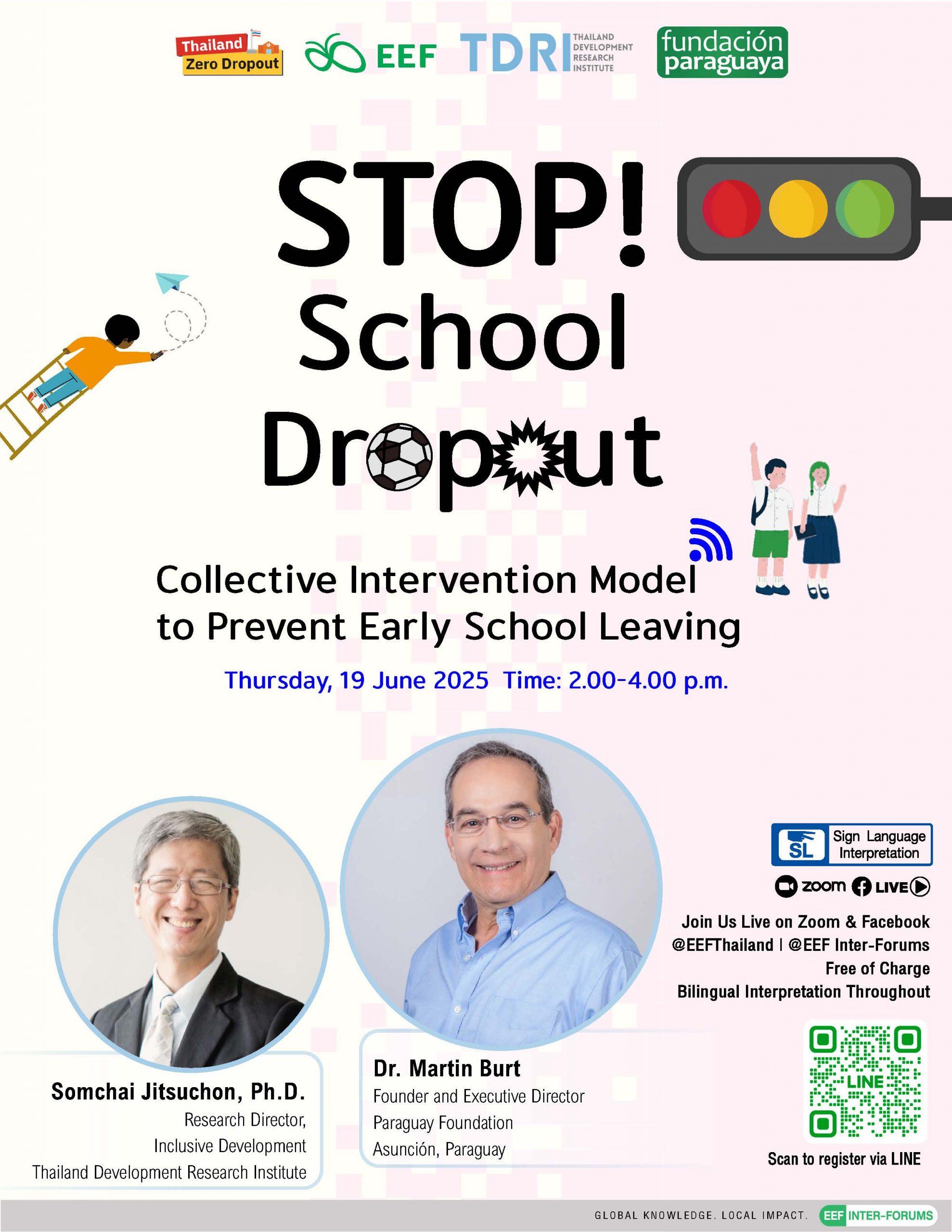
In Paraguay, a country of seven million, rural communities face entrenched educational and economic challenges: high dropout rates, low achievement, limited parental involvement, and scarce infrastructure. Many informal workers—often school dropouts from disadvantaged families—struggle to survive. These challenges stem from complex personal, familial, and cultural factors, be it violent homes, poor living conditions, or systemic neglect, demanding a holistic understanding of each household. To address this complexity, Poverty Stoplight transforms household-level data into targeted, sustainable interventions, improving the lives of over 530,000 Paraguayan families and expanding to 60 countries through government, non-profit, and private partnerships.
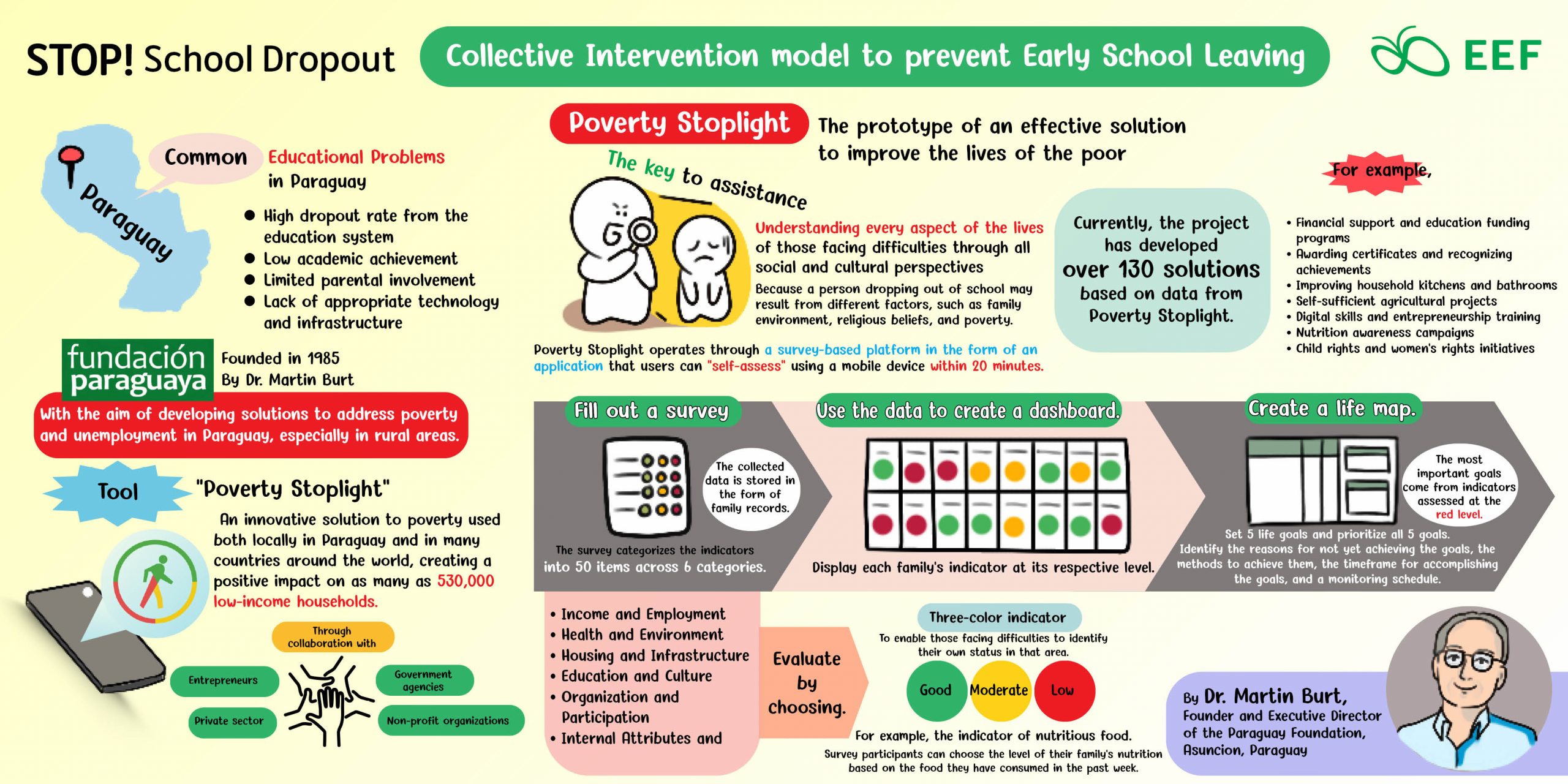
Poverty Stoplight enables households to conduct a rapid, 20-minute self-assessment via a mobile application. It evaluates 50 indicators across six categories—Income and Employment, Health and Environment, Housing and Infrastructure, Education and Culture, Organization and Participation, and Inner Qualities and Motivation—capturing every facet of family life. Each indicator is rated with a traffic-light color system: Green, Yellow, or Red, representing High, Moderate, and Low respectively. The resulting dashboard of 50 color-coded cells highlight strengths and weaknesses, which participants use to create their Life Maps. From there, they set and prioritize five goals drawn primarily from red-marked areas, identify obstacles, define methods, establish timelines, and schedule progress tracking. This structured, data-driven approach equips Paraguay Foundation to design targeted interventions drawing from a growing bank of 130 solutions, ensuring that every family’s path from vulnerability to empowerment is systematically mapped, monitored, and realized.
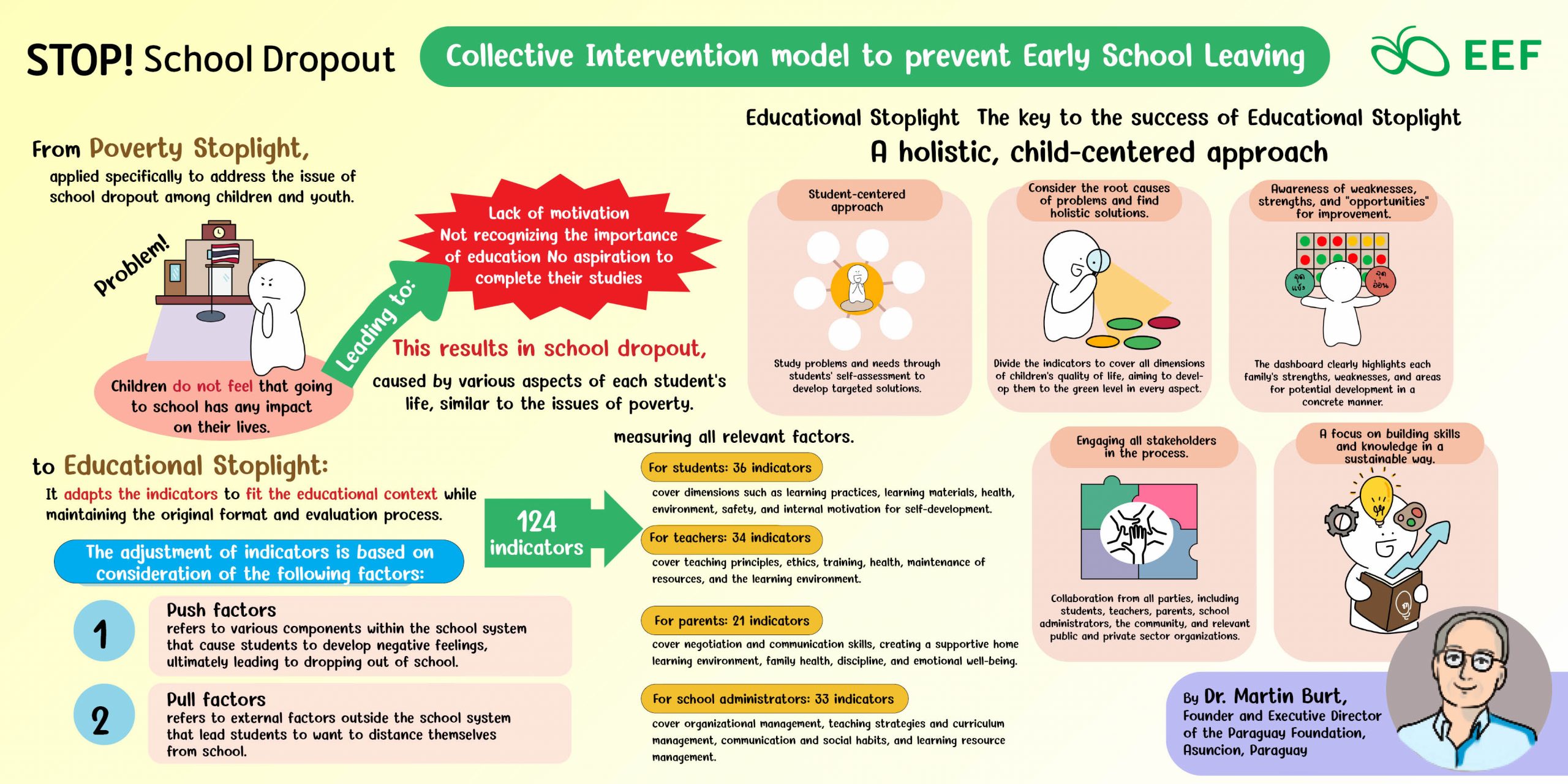
From this model emerged the Educational Stoplight, designed specifically to prevent school dropout. Students leave school when it feels irrelevant, fostering low motivation and undervaluating learning. The causes—often rooted in poverty—span interconnected aspects of life that cannot be addressed in isolation. Adapting the original traffic-light system, the Educational Stoplight evaluates 124 indicators across students, teachers, parents, and school administrators, distinguishing push factors from pull factors to comprehensively map dropout risks. Student-led self-assessments generate dashboards that reveal strengths, weaknesses, and opportunities for improvement, guiding personalized solutions that engage all stakeholders—families, teachers, administrators, communities, and public and private agencies alike. By combining holistic analysis with active engagement, this approach transforms short-term interventions into lasting educational impact.
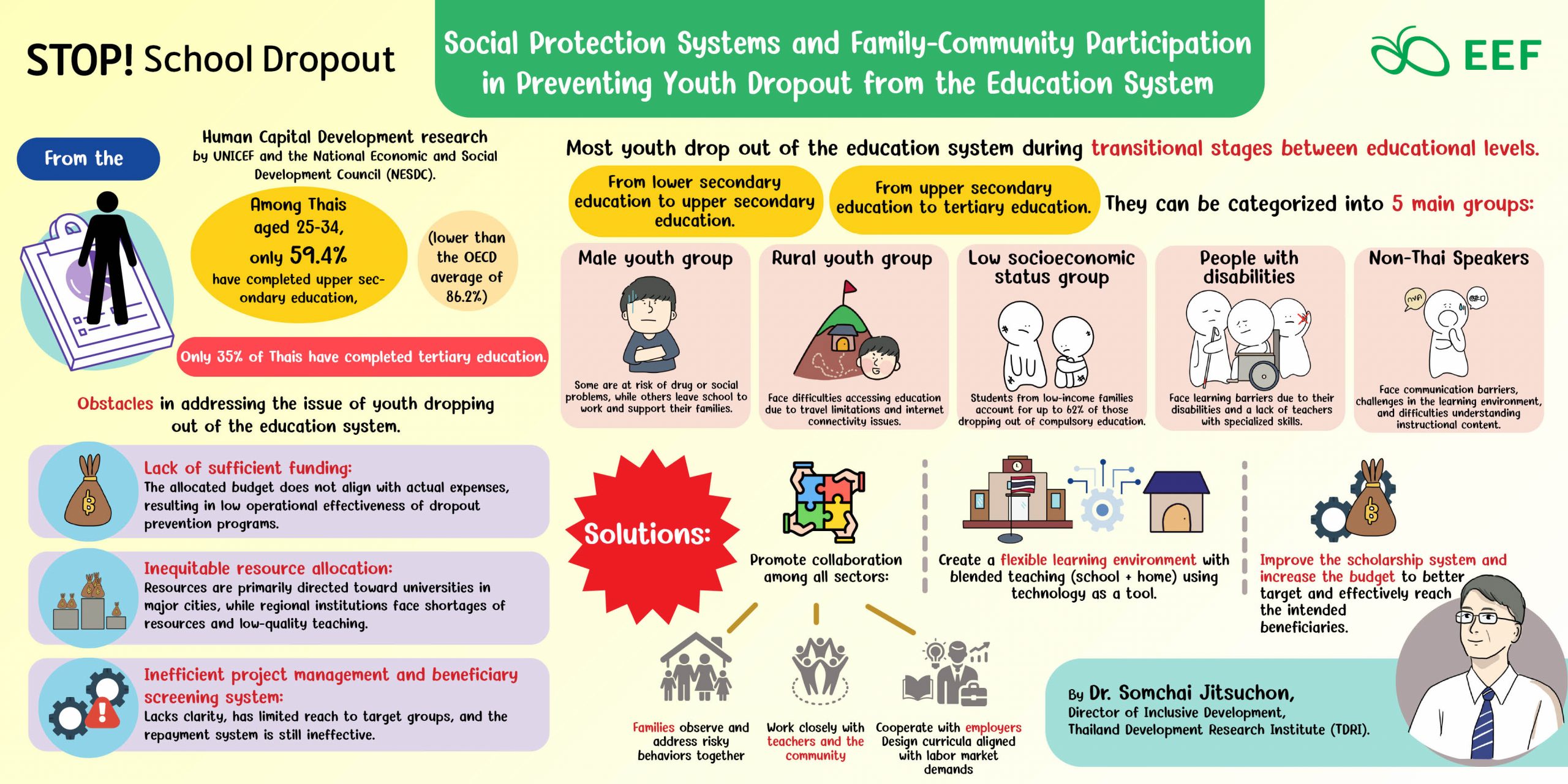
Currently, Thailand faces a critical human capital gap: only 59.4% of people aged 25–34 have completed upper secondary education, far below the OECD average of 86.2%, while merely 35% have attained tertiary education. Youth dropout persists due to insufficient funding, inequitable resource allocation, and inefficient management and screening systems that fail to reach the most vulnerable. Dropout spikes at two transition points: from lower to upper secondary and from upper secondary to tertiary education. Those most at risk include males susceptible to drug abuse or forced into early labor, rural youth hindered by transport and digital divides, low-income students, persons with disabilities, and non-Thai speakers facing language barriers. Human Capital Development research recommends a multifaceted strategy: 1) cross-sector collaboration for early risk detection and labor-market alignment; 2) blended school- and home-based learning with technology; and 3) enhanced fund management with increased budget allocations for inclusive access. By mapping multidimensional poverty, tracking progress through participatory monitoring, and activating targeted, context-specific solutions, this approach directly engages households, communities, and institutions to break cycles of disadvantage.
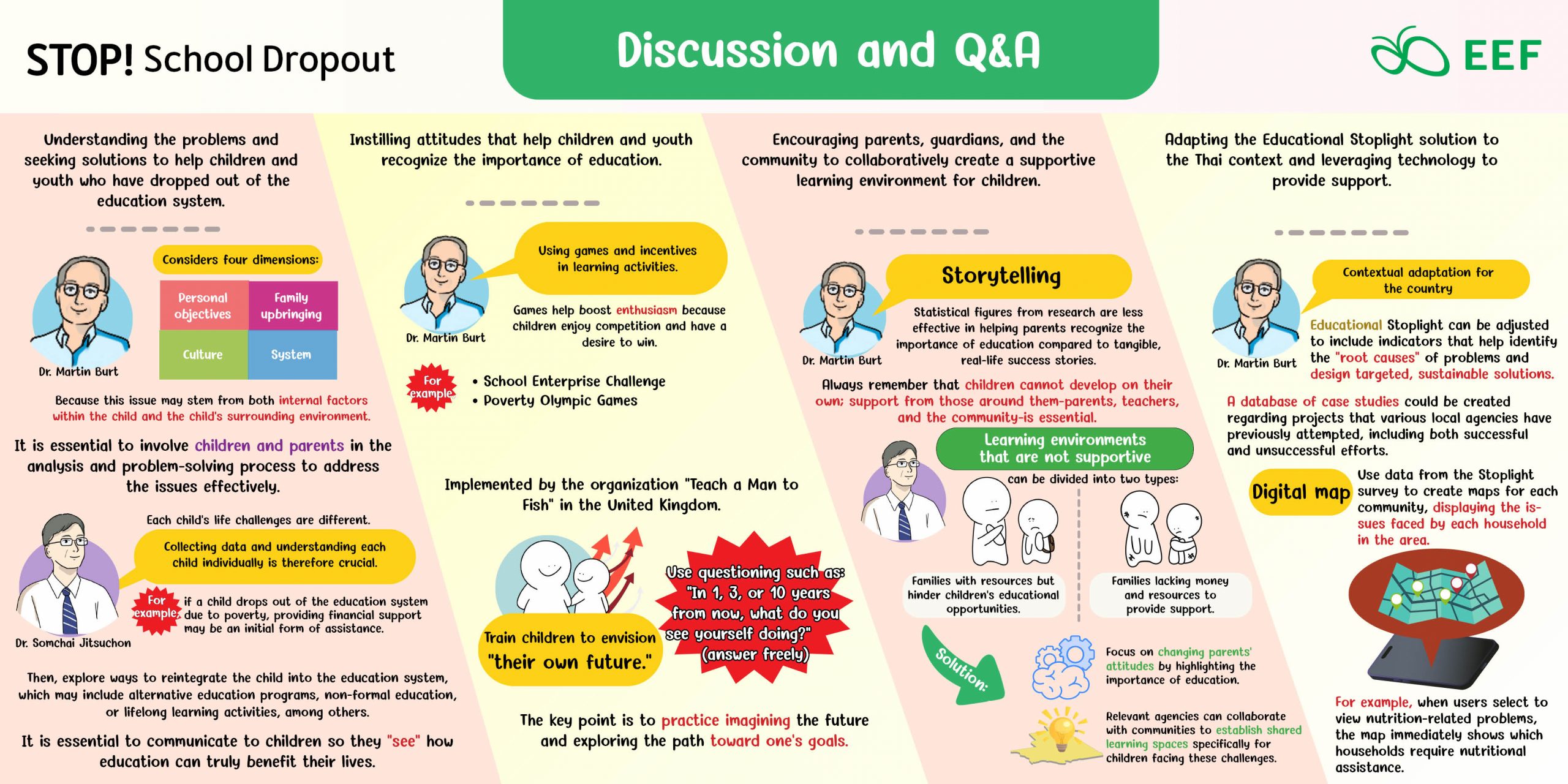
Ultimately, school dropout is not merely a statistic; it reflects the complex realities of children’s lives, shaped by personal aspirations, family circumstances, cultural norms, and systemic barriers. Each young person’s path demands tailored support that links learning to meaningful opportunities, from financial aid to flexible education pathways. Motivation grows when education feels relevant and rewarding, and when parents, communities, and schools collaborate to nurture it. Tools like the Educational Stoplight expand these spaces of opportunity, translating household insights into targeted, sustainable interventions. By combining data-driven solutions with community engagement and locally adapted technology, initiatives such as Thailand Zero Dropout can transform the crisis of school attrition into a pathway of empowerment—ensuring that every child, no matter their starting point, remains on the journey toward education, skills, and opportunity.

